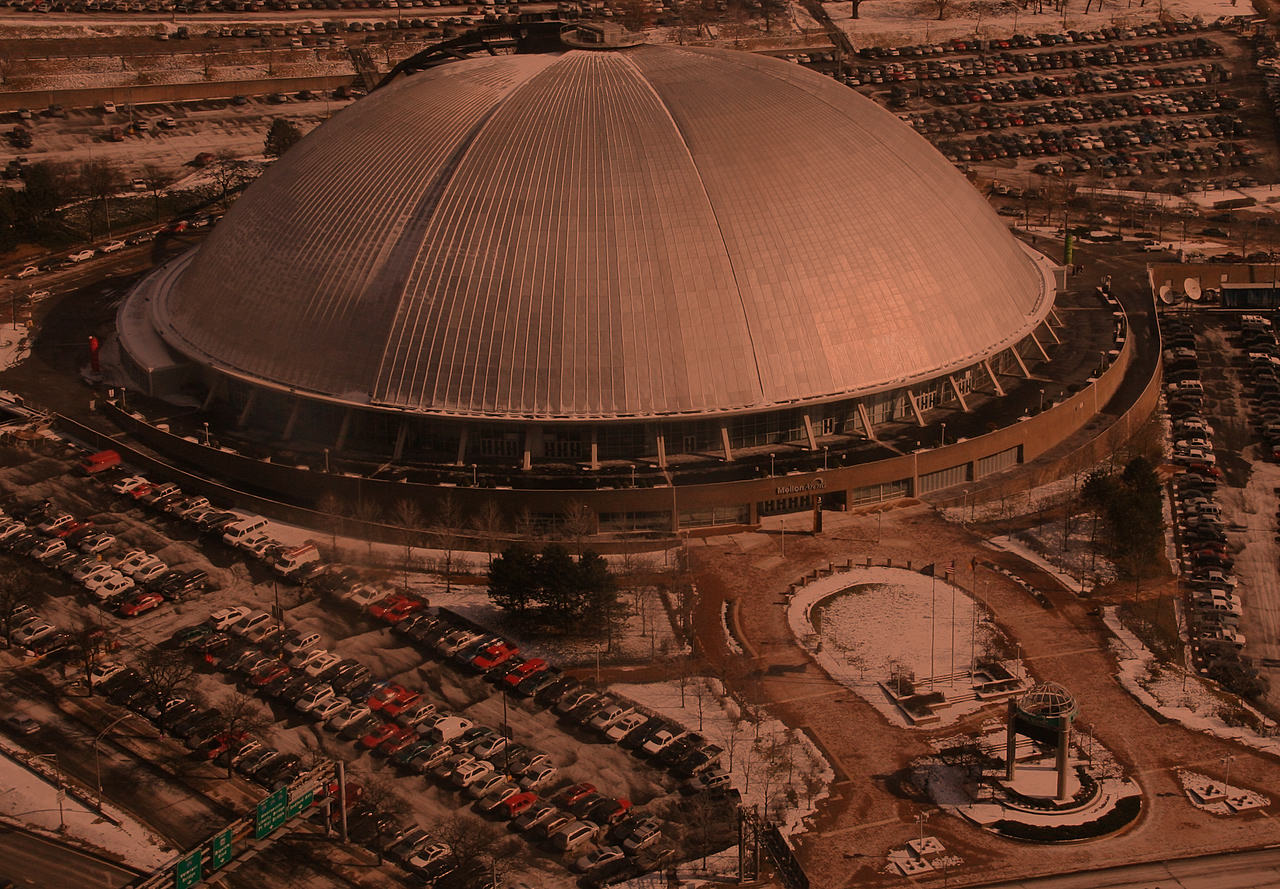-
Posts
440 -
Joined
-
Last visited
-
Days Won
36
Content Type
Profiles
Forums
Events
Everything posted by Jack Handey
-

Allegheny Badgers 2022-23
Jack Handey replied to RegDunlop7's topic in Western Pennsylvania Youth Hockey
I'm too lazy to find it on the mid-am site but I think mid-am has the same 15% model that Detroit does. Meaning a max of 15% of players in an age class can be rostered on Tier I teams. -

Allegheny Badgers 2022-23
Jack Handey replied to RegDunlop7's topic in Western Pennsylvania Youth Hockey
Congratulations. You're the best team in a weak birth year. Why not join 16uAA next year and play the 06s if you need a challenge? -

Allegheny Badgers 2022-23
Jack Handey replied to RegDunlop7's topic in Western Pennsylvania Youth Hockey
Because the way PAHL and USAH are structured, next year they could play all the PAHL 06 talent in 16uAA. Do you really expect to win every game in 16uAA next year by 5-6? -

Allegheny Badgers 2022-23
Jack Handey replied to RegDunlop7's topic in Western Pennsylvania Youth Hockey
Hmmm. I remember last year when the 07s entered 14u tier II Mid-Am and they did well. But what's up with the national bound label? There is no 15u tournament at Tier II. Do they really think they can win 16u Tier II next year with Renegades, NP, and Allegheny 06 in the way? -

Allegheny Badgers 2022-23
Jack Handey replied to RegDunlop7's topic in Western Pennsylvania Youth Hockey
Maybe they are joining the black bear league. Who knows. I'm no union guy but I'm at the point that if an AA team wants to go 100% independent, PAHL should perhaps unite a bit and isolate these jokers through some solidarity. So you're too good for the local market and you want to cherry pick your competition? Fine. Have fun playing all your games in Buffalo and Detroit. Let's go Darcee. Make it happen. There is no reason you can't play both an independent schedule with a PAHL schedule. ESPECIALLY AT 2006 where there is a ton of local talent. -

Hockey Factory 2022 Senior Chowder cup Team
Jack Handey replied to TourneyGuy's topic in Western Pennsylvania Youth Hockey
Probably Cliff Loya. https://nationalelitehockey.com/ -

North Catholic/Excel Hockey
Jack Handey replied to SuperStar's topic in Western Pennsylvania Youth Hockey
I've heard a few parents who have gone through Excel complain about player burnout. Has anyone else heard this? -

Hockey Factory 2022 Senior Chowder cup Team
Jack Handey replied to TourneyGuy's topic in Western Pennsylvania Youth Hockey
Been to this a few times. Agree with Danner, I have seen a few but not many scouts in attendance. Maybe Sunday morning they come for the elimination rounds. Maybe. The hockey is surprisingly not so good to watch because, well, it's all summer teams. No teamwork in a group that has only played/practiced together a few times. Speaking of teamwork, I have seen some very strong teams from Canada come down and absolutely destroy US summer teams. So, beware the Canadians if they are allowed in this year. Would I go again? Yes, but only because there is neat stuff in Boston to see and I can build a summer trip around this. Unless your players is a phenom, there are better uses of your money at ages 13, 14, 15 unless you are building this into the family vacation plan. A final thought, usually by late July, most tier I and tier II junior teams already have their main camp sold out. Think about that. -

Tier 2 States Seeding
Jack Handey replied to Hattrick Swayze's topic in Western Pennsylvania Youth Hockey
Actually they use a relatively modern design from SportEngine which is only 6-7 years old. The problem is getting them to create and update content around the tournament and spring/summer camps. They really do struggle with public presentation of content. -

Tier 2 States Seeding
Jack Handey replied to Hattrick Swayze's topic in Western Pennsylvania Youth Hockey
it gets posted on the mid-am site but their web update skills leave a lot to be desired. -

Question for PIHL JV Coaches.
Jack Handey replied to Ron Shock's topic in Western Pennsylvania Youth Hockey
I'm not aware of any WPIAL playoffs for JV or MS. I am admittedly a few years removed from that age, though. -

Question for PIHL JV Coaches.
Jack Handey replied to Ron Shock's topic in Western Pennsylvania Youth Hockey
Yes, MS and JV have an end of season single-elimination tournament that is regarded as a season ending playoff. Yes, there is a playoff system in other sports. Most schools in Southwest PA roll up into a league called WPIAL (https://www.wpial.org/). There are WPIAL playoffs which then feed into PIAA district playoffs. -

Local teams playing in out of state leagues
Jack Handey replied to forbin's topic in Western Pennsylvania Youth Hockey
Junior hockey in the USA has 3 tiers of skill level. To use a convention from the Olympics: Tier I = Gold level. Kids in this league are probably going to play NCAA D-I college and have the best chance at a professional career. There is one USA Hockey sanctioned league at this level called the USHL. Tier II = Silver level. Kids at this level have a chance to play NCAA D-I college hockey, and several will opt for NCAA D-III. There is one USA Hockey sanctioned league at this level called the NAHL. Tier III = Bronze level. Kids in these leagues are likely to fill out remaining spots on NCAA D-III teams, but most will wind up on ACHA club teams if they continue to play college hockey. There are many leagues at this level. The main difference: Tier I and Tier II are generally free to play, meaning your assigned team covers cost of ice, game expenses, some equipment, etc. Tier II does not fully cover all the expenses but the bigger costs are covered. Tier III leagues and teams are are "pay to play", meaning that the players on the team are charged a fee to be on the team. Each player typically sign a contract to commit to the team for the season. The average cost (fee) to play Tier III hockey is $10-11k plus any living expenses racked up along the way. There are multiple Tier III leagues in the USA. The NA3HL is a USA Hockey sanctioned Tier III league. The USPHL is a Tier III league, non-sanctioned (by USAH), but it is a growing alternative to NA3HL. The Pittsburgh Vengeance plays in the USPHL. A few years ago, to compete for talent and offer a path upward, the USPHL formed a "free to play" league called the NCDC. This league supposedly competes with the Tier II NAHL but I think right now the NAHL is outproducing on NCAA D-I players. Then there is Canada, which also as a multiple tiered hierarchy of skill. The Canadian system warrants its own post for sure. The Tier II path in Canada can also lead to US college opportunities, and an argument could be made that some Canadian Tier II leagues are better than the NAHL for college development. -

Tier 2 States Seeding
Jack Handey replied to Hattrick Swayze's topic in Western Pennsylvania Youth Hockey
Wow, lots of teams. Perhaps too many. -

Question for PIHL JV Coaches.
Jack Handey replied to Ron Shock's topic in Western Pennsylvania Youth Hockey
I took it as rolling lines. I'll caveat and qualify my original opinion: in PIHL MS and JV, winning starts to matter, based on my observations of my school district's teams and competing school districts' teams over the last decade as both a PIHL coach and PIHL parent. I guess my school has never played your school but school hockey is taken very seriously where I'm from. -

USA Hockey Rate Increase
Jack Handey replied to HereWithPopcorn's topic in Western Pennsylvania Youth Hockey
You would think there would be a grandfathering in of the older kids. Or maybe it is the way it is because older kids are more likely to sustain injury and therefore are higher risk for insurance claims. Oh well, they didn't run this one by me. -

USA Hockey Rate Increase
Jack Handey replied to HereWithPopcorn's topic in Western Pennsylvania Youth Hockey
don't forget the affiliate (mid-am) fee too! -

RMU Hockey reinstated for 2023
Jack Handey replied to Spear and Magic Helmet's topic in Western Pennsylvania Youth Hockey
Agreed - a reboot of a D1 program is probably a better option than a D3. -

RMU Hockey reinstated for 2023
Jack Handey replied to Spear and Magic Helmet's topic in Western Pennsylvania Youth Hockey
Yep saw a NAHL (I think he was NAHL) commit yesterday on social media. Frankly I thought it was pretty brave given all that has transpired. -

Question for PIHL JV Coaches.
Jack Handey replied to Ron Shock's topic in Western Pennsylvania Youth Hockey
yeah but it's kind of important for people especially those with upcoming 6th graders to know two things. 1. properly structured, MS & JV are prep for varsity. 2. PIHL hockey is not house/rec hockey and winning starts to matter. -

2022 CHMA PLAYOFFS - ACHA Nationals
Jack Handey replied to Pa Hockey's topic in Western Pennsylvania Youth Hockey
Certain leagues will put a meaning behind AA and A but that meaning will change from league to league. Pittsburgh AA is different from Detroit AA is different from Buffalo AA. And independent teams can put as many As into their name as customers will pay for. None of it matters as you can only declare for either Tier I or Tier II playoffs. -

2022 CHMA PLAYOFFS - ACHA Nationals
Jack Handey replied to Pa Hockey's topic in Western Pennsylvania Youth Hockey
Be careful with the A, AA, and AAA. They mean different things in different geographies and in different leagues. If you are trying to compare apples to apples, it's better to think of teams in terms of their declared classes: Tier I, Tier II, and House/Rec. -

Question for PIHL JV Coaches.
Jack Handey replied to Ron Shock's topic in Western Pennsylvania Youth Hockey
Are there any PIHL programs that offer access to a weight room or professional off-ice group training? -

Question for PIHL JV Coaches.
Jack Handey replied to Ron Shock's topic in Western Pennsylvania Youth Hockey
If structured properly, MS and JV should also be doing the same drills and introducing the same systems that varsity uses. Since Varsity doesn't roll lines, and MS and JV are feeders to Varsity, most MS and JV teams are setting the expectation with the youth that the program is about winning, not development. If you are not getting any playing time for your $2-3k, the money is probably better spent on PAHL teams, house programs, private lessons, or better yet the family 529 plan.





